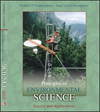 |  Principles of Environmental Science William P. Cunningham,
University of Minnesota
Mary Ann Cunningham,
Vassar College
Energy
Learning ObjectivesAfter studying this chapter, you should be able to
I.summarize our current energy sources, and explain briefly how our energy compares with that of other people in the world. |
 |  |  | II.analyze the resources and reserves of fossil fuels in the world. |
 |  |  | III.evaluate the costs and benefits of using coal, oil, and natural gas. |
 |  |  | IV.understand how nuclear reactors work, why they are dangerous, and how they might be made safer. |
 |  |  | V.appreciate the opportunities for energy conservation available to us. |
 |  |  | VI.understand how active and passive systems capture solar energy and how photovoltaic collectors generate electricity. |
 |  |  | VII.comprehend the promise and problems of using biomass as an energy source. |
 |  |  | VIII.explain how hydropower, wind, and other energy from the earth's forces can contribute to our energy supply. |
|



 2002 McGraw-Hill Higher Education
2002 McGraw-Hill Higher Education